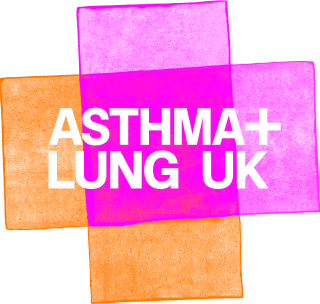Diagnosing bronchiectasis
The information in this section will give you an overview of bronchiectasis in adults and what steps to take if you think your patient in primary care might have the condition.
This is not a substitute for completing an appropriate respiratory assessment module. For advice and support on choosing the right course for you, please see our training and development page.
Routes to diagnosis
The diagnosis of bronchiectasis is made from a high-resolution CT scan.
Usually the patient journey starts with a patient presenting with symptoms to their GP practice. They should be assessed, relevant tests performed and then referred for a CT scan if appropriate. Most patients then receive their diagnosis from a specialist in secondary care.
You might also see bronchiectasis on a CT scan report from the lung cancer screening programme, or from a chest CT carried out for another reason. These cases will need follow up in primary care and referred to a specialist in secondary care if they have symptoms.
After diagnosis, patients should be seen by the specialist respiratory team to create a care plan that’s agreed together with the patient, the specialist team and the primary care team. The specialist team can grade the severity of your patient’s bronchiectasis using tools such as the bronchiectasis severity tool.
Many patients are then managed in primary care although higher risk cases will remain under the specialist team.
When to suspect bronchiectasis
Consider bronchiectasis in a patient who has a persistent, productive cough for longer than 8 weeks, or repeated chest infections, especially if they have any of the conditions that can cause it.
If you think that bronchiectasis is a possibility, you need to assess, examine and perform tests so that you can identify and treat any other causes of their cough, including COPD, lung cancer, asthma and gastro-oesophageal reflux.
Remember that some of these conditions can co-exist with bronchiectasis too.
Use the guide below to structure your assessment.
| Questions to ask your patient | Why these questions matter |
|---|---|
|
How long have you had your cough? Do you cough up sputum? How much - teaspoon, tablespoon, egg cup, tea cup? How often? |
A recurrent productive cough (one that has lasted for 8 weeks or longer) is a key sign of bronchiectasis. Sputum production will vary from person to person, and some people may never be able to expectorate (cough up) sputum from their chest. |
|
What does the sputum you cough up look like? Have you ever coughed up blood or noticed blood in the sputum you cough up? Have you ever had a sputum sample tested? |
Sputum colour can suggest infection (if green or brown) and any blood in the sputum (haemoptysis). Thick sputum can also indicate infection. Haemoptysis can be a sign of bronchiectasis but is also associated with lung cancer so will need further investigation. Check your patient’s notes for the presence of pseudomonas aeruginosa in their sputum samples. |
| Do you have any other medical conditions? | This question will help you identify conditions which increase the likelihood of bronchiectasis. |
Do you feel tired some or most of the time? |
Fatigue is common in bronchiectasis due to the increased energy expenditure required for breathing, fighting chronic infections, and the impact of the disease on overall health and well-being, including sleep disturbances |
| Did you have chest symptoms in childhood, or were you told you have asthma? Did you have childhood infections such as whooping cough, ear infections and ear infections? |
Many people with bronchiectasis have had chest symptoms since childhood. Some childhood infections can cause lung injury that leads to the development of bronchiectasis. |
|
Are you a smoker, or have you smoked in the past? Do/did you smoke roll ups, cigars, a pipe, a water pipe, marijuana? How many years have you smoked/did you smoke for? What quantity of tobacco do/did you smoke? Have you been exposed to passive smoking in your lifetime? |
Smoking history is important in any respiratory assessment. Bronchiectasis can occur in smokers and non-smokers. Calculate pack years and also record the duration of their smoking time. The total number of years a person has smoked matters as long-term smoking leads to cumulative damage to the lungs. Passive smoking is an exacerbating factor in bronchiectasis. |
|
What makes you breathless? Do you get breathless during the night? |
Bronchiectasis can cause mild to moderate airflow obstruction that tends to worsen over time. Use a validated tool such as the mMRC dyspnoea scale to measure and record the severity of their breathlessness. Record and document your patient’s respiratory rate and oxygen saturations. Check for ankle oedema and chest pain to exclude cardia symptoms. |
Do you have frequent chest infections? |
Many patients will have had exacerbations before they are diagnosed, because they have normalised their symptoms or don’t realise that they are significant. Look through your patient’s notes for evidence of repeated chest infections or episodes of ‘winter’ bronchitis. They may or may not have been prescribed antibiotics and/or steroids, or previous inhalers. |
|
|
Gastro-oesophageal reflux disease is common in bronchiectasis and associated with more frequent respiratory exacerbations. Management of GORD can improve respiratory symptoms and reduce exacerbations in some patients |
| Do you have nasal problems, such as rhinosinusitis or nasal polyps | Chronic rhinosinusitis is present in up to 70% of cases of bronchiectasis and should be treated to protect the airways. |
|
How is your weight and your appetite?
|
People with bronchiectasis can struggle to maintain weight. Record their BMI or use the Malnutrition Universal Screening Tool which combines unintentional weight loss and the BMI measurement. |
Chest auscultation
You should only listen to your patient’s chest if you are trained to do so. In a patient who has bronchiectasis you may hear inspiratory basal coarse lung crackles. Ask the patient to cough and listen again and you may hear the sounds change as sputum has moved.
Investigations
Your patient should have a chest X- ray to exclude conditions such as lung cancer or pleural effusion. A normal chest X-ray does not rule out bronchiectasis so if clinical suspicion remains high, refer to secondary care for a high-resolution CT chest scan
Send a sputum sample to identify bacteria, fungi, or atypical organisms causing infection (e.g. Pseudomonas aeruginosa, Haemophilus influenzae, Staphylococcus aureus, Non Tuberculosis Mycobacterium). It’s best if the sputum sample can reach the lab on the day that it is produced.
Perform spirometry to identify airflow obstruction and identify any co-existent conditions such as asthma or COPD. In bronchiectasis, the spirometry might be obstructive, restrictive or normal.
Request baseline blood tests including FBC, ESR, CRP, Renal, LFT, Bone biochemistry, Glucose, Thyroid, Vitamin D.
Following diagnosis
Once your patient is diagnosed, the specialist team in secondary care will undertake additional blood testing for alpha-1 antitrypsin, immunoglobulins, auto antibodies, aspergillus and pneumococcal antibody levels.
Some patients might also be tested for cystic fibrosis as although this is usually diagnosed in childhood, occasionally cases in older adults are detected.
They should be offered smoking cessation if they are nicotine dependent.
Send your patient a link to our bronchiectasis health advice pages and our Living with Bronchiectasis leaflet.
Signpost them to our helpline, where they can talk through their diagnosis in more detail with one of our specialist nurses.
They can also join one of our support groups, so that they can understand more about their condition and meet other people living with a lung condition.





